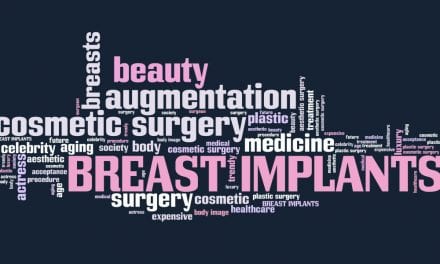Kamakshi R. Zeidler, MD, is constantly inspired by her breast reconstruction patients’ abilities to get through the emotionally and physically draining process and come out on the other end feeling empowered, confident, and feminine.
This is one of the many reasons why she loves what she does. While the rest of the nation focuses their time and attention on breast cancer awareness in October, Zeidler—an aesthetic and reconstructive plastic surgeon in the Los Gatos, San Jose, and greater South Bay Area of California—treats women with and at risk for breast cancer all year long.
Zeidler talked to Plastic Surgery Practice about why she feels so connected to her patients, as well as some of the recent innovations in breast reconstruction. Here’s what she had to say:
1) How much of your practice is devoted to breast reconstruction?
Currently, about half of my practice is dedicated to patients with breast cancer or the breast cancer gene, both of whom undergo procedures that can be physically deforming to their breasts.
2) Do you see many prophylactic mastectomy patients in your practice?
Many studies have documented an increase in prophylactic mastectomies over the past decade. These same studies have also shown an increasing trend in women with breast cancer choosing mastectomy over lumpectomy, as well as choosing to have bilateral mastectomies even when only one breast is affected. These trends may be attributed to the increasing use of MRI, which can show much more detail about disease, as well as improved reconstruction techniques and results.
3) Did Angelina Jolie’s revelation in May 2013 cause this uptick?
The uptick in women undergoing prophylactic surgery began long before Angelina shared her story. My family is affected by the sameBRCA gene mutation that Angelina Jolie has. I asked both of my sisters, who have been considering the same prophylactic surgery, what it means to them that Angelina shared her story. Their response was that it made conversations with their significant others easier, whether children, best friends, boyfriends, or husbands.
4) Are there benefits to being a female when it comes to treating breast cancer patients?
Absolutely! Being a woman allows me to have a different kind of relationship with my patients. Many patients are very comfortable sharing their issues, such as how reconstruction affects their sexuality and intimacy. There are nuances that I have learned from these intimate details that have made me modify my techniques for better outcomes.
5) What has been the biggest paradigm shift in breast reconstruction since you started practicing?
There has been a fundamental shift in our reconstructive goals from looking good in clothes—to looking good naked—to looking better than before a mastectomy. This can make our job as plastic surgeons very challenging. This paradigm shift has occurred with recent advances in nipple-sparing mastectomy—so that our operations are more breast replacement than breast reconstruction.
6) What role does fat grafting have in breast reconstruction in your practice?
Fat can be used to enhance lumpectomy defects, and used to fine-tune both implant-based and autologous flap breast reconstructions. Fat grafting gives us the ability to smooth out irregularities in mastectomy flaps, adjust for size differentials, and sculpt a breast to perfection. I routinely fat graft during a second-stage procedure over an implant, focusing fat to the cleavage region and to the area behind the nipple to give extra projection. Certainly, patients enjoy the added benefit of removing fat in another part of the body!
7) Do the new form-stable implants have a role in breast reconstruction?
Yes, they do. These implants are my default, especially the extra-high-projection, form-stable implants. After mastectomy, so much tissue is removed that the reconstructed breasts often end up looking just like the underlying implant. If that implant is round, the top edge of the reconstructed breast can have a very fake look, even when camouflaged by large-volume fat grafting. The natural slope of the form-stable implants gives the upper pole of the breast a much more natural appearance.
8) Do you recommend nipple reconstruction?
Yes. I recommend women complete the reconstruction because it makes daily activities like changing clothes in the gym more of a routine process that need not be interrupted by a reminder of their cancer history.
9) Have any of your breast cancer patients inspired you?
All of my patients inspire me!
10) Why do you love what you do?
When it comes to breast reconstruction in particular, as a woman, I understand the importance of femininity to a woman’s well-being. Having a family affected by the breast cancer gene makes me acutely aware of how important breast reconstruction is, and I am endlessly grateful to have the ability to make a difference in the lives of these very special patients.
Denise Mann is the editor of Plastic Surgery Practice. She can be reached at [email protected].



